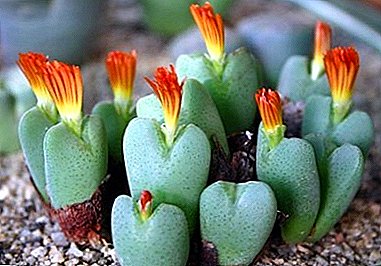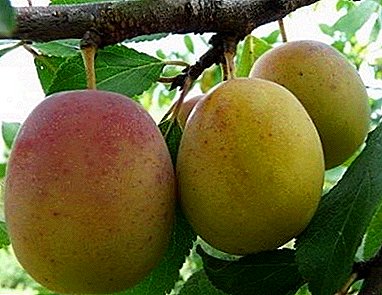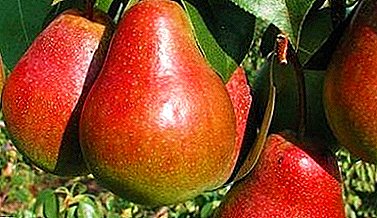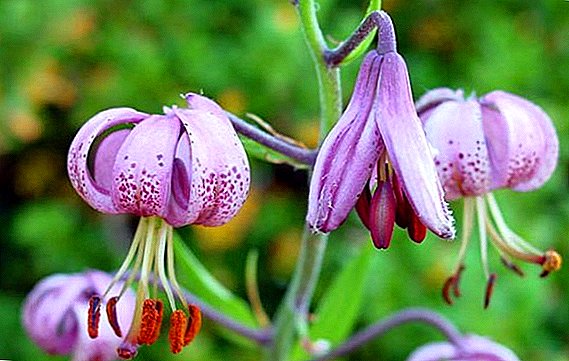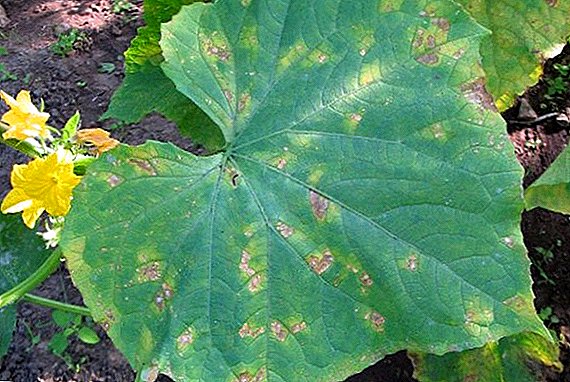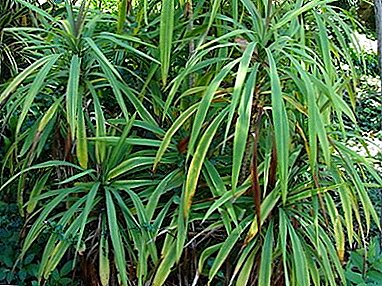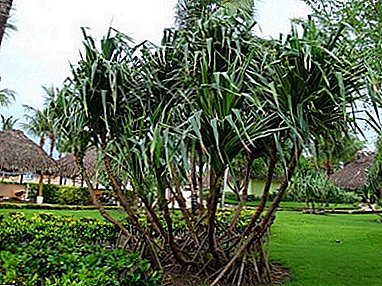
Palm Pandanus - a beautiful bushy plant, but not very suitable for breeding in the apartment. It can grow to an impressive size in a short period of time, because it is usually placed in spacious halls with high ceilings.
You also need to keep in mind that the edge of the leaves is covered with small spikes, which can injure pets and children.
Motherland Pandanus - the tropical part of Africa, Asia, the island of Madagascar. Another name for this plant is the helical palm tree, the leaves on the trunk are arranged in several rows in the form of a spiral. Over time, air roots depart from the trunk, which allow it to be kept upright after the crown grows. When grown in a pot, they are usually not formed.
Kinds
There are over 600 different types of pandanus, the most famous of which are:
- Hiding behind - It is an evergreen shrub with aerial roots, which in natural conditions grows 3-4 meters tall. Gradually, the external roots grow into the ground, and the trunk under them rotters, which is why the plant begins to be held only by them. The plant produces sweet fruits of orange or red color.
- Sander - This is a tree with a short trunk. Its leaves are long, with yellow stripes in the middle. Grow up to 80 centimeters long and 5 centimeters wide. The edges of the leaves are studded.
- Useful - when grown in a room it can grow up to 2-3 meters high. After the formation of inflorescences branches. The leaves grow in a spiral, up to 1 meter long and up to 10 centimeters wide. Along the edges are red spikes.
- Veitch - an evergreen plant with a short stem, from which aerial roots depart. Like the pandanus hiding, this species also rotting in the process of aging in the process of aging. Leaves 60-90 centimeters in size grow very densely in an ascending spiral. On the edge of the sheet is a white stripe and a number of small spines. Almost does not bloom in an apartment. When creating a favorable environment, it can grow to a height of 1.5 meters in 10 years.
Photo: screw palm (pandanus) hiding.




Home care
Pandanus (screw palm) very unpretentious, it can successfully grow novice florist. He calmly responds to the lack of watering, light, it does not harm the low moisture content in the air. The only thing that needs to be done regularly is wiping the leaves with a damp cloth.
This video describes the highlights of caring for Pandanus.
Features care after purchase
Get the best young plant - it will be easier for him to adapt to new conditions and without problems to undergo acclimatization. If the purchase is made in the winter, you need to take care of its warming - wrap it several times with newspapers, thick cloth, or put it in a thermo bag.
Transplanting is done in a new pot no earlier than 2 weeks from the date of purchase, while the new container is selected only 1-2 centimeters more than the previous one. Expanded clay is poured at the bottom of the pot, and the roots are carefully cleaned of the transport substrate (it is best to try to remove it all, however, you should try not to damage the roots).
Lighting
 Pandanus not very picky about lighting - can grow with equal success both in the window and in the shade in the depth of the room. But in the latter case, the white stripes on the leaves lose some brightness, starting to merge with the general green color of the leaf.
Pandanus not very picky about lighting - can grow with equal success both in the window and in the shade in the depth of the room. But in the latter case, the white stripes on the leaves lose some brightness, starting to merge with the general green color of the leaf.
On his window it is not advisable to expose under direct sunlight (preferably soft diffused light), the optimal intensity - 8-10 hours.
In winter, you can organize additional lighting. The plant grows quickly, and when it starts to take up a lot of space on the window sill, you can gradually move the pot to a new place, moving it away from the window every few days.
Temperature
Plant feels great at temperature + 21-28 degrees. In winter, you need to make sure that it does not fall below +16 degrees, so putting a flower on an unheated balcony or loggia is not desirable. Does not like drafts.
Air humidity
 It does not matter at all, as the pandanus normally feels in dry and humid air. Additionally, you can not spray - water may stagnate in the axils of the leaves, which will lead to their decay. For the same reason, you can not wash the plant in the shower.
It does not matter at all, as the pandanus normally feels in dry and humid air. Additionally, you can not spray - water may stagnate in the axils of the leaves, which will lead to their decay. For the same reason, you can not wash the plant in the shower.
It is recommended to wipe the leaves from dust with a damp cloth, but because of the spikes, this should be done as carefully as possible with gloves. Rubbing starts from the base of the sheet, and is made along it to the tip.
Watering
In spring and summer requires abundant wateringbut without stagnant excess water in the soil and pallet. It is best to have the top layer dry a little before the next time.
The procedure is performed with warm distilled water with a temperature of about 30 degrees. With the arrival of cold weather watering can be limited, the lower the temperature in the room - the less the plant requires moisture.
Bloom
Spiral Palm (Pandanus) hardly blooms when grown indoors. In nature, small yellow flowers appear on the plant, gathered in large lush ears.
Fertilizers (dressing)
Top dressing can be made only when there is an intensive growth - In spring and summer. For this complex fertilizers are purchased for deciduous plants. The frequency of application is once every two weeks. Positively reacts to organic top dressing.
Transfer
Pandanus has very thin sensitive roots, therefore transplanting should be done with utmost care. In addition, a serious inconvenience deliver thorns. Therefore, they do it in gloves, and the plant itself is carefully wrapped in a dense fabric.
Young plants, until they are 4-5 years old, are transplanted annually in spring. Soil does not change - just roll over the earthy ball into a new pot.
Adult plants are transplanted every 2-3 years - during this time the roots have time to fill the entire space of the pot.
You need to be very careful about air roots, and in no case should you bury them in the ground - the ground level must be maintained!
Capacity is selected by 2-3 centimeters more than the previous one, necessarily deep (or at least the same in width and height). It must be remembered that an adult flower is heavy and can easily turn over its small pot.
And in this video you will clearly see how to replant and propagate Screw Palm.
Growing up
The plant can be grown from seeds or shoots:
- Seeds sown without preparation into the ground from peat, sand and leafy ground. After that, the container is covered with plastic or polyethylene and placed at a temperature of +25 degrees. Under the conditions and regular watering shoots appear after 3-4 weeks. When 2-3 leaves are formed on each, they can be transplanted into individual pots.
- Cuttings cut from lateral shoots of at least 20 centimeters in size. Place the cut on the mother plant immediately powdered with charcoal. The processes are placed in the soil of peat and sand, covered with a film or plastic, and must also grow at a temperature of +25 degrees. Rooting occurs in 1.5-2 months.
Fruits and their application
 When grown in an apartment pandanus does not usually bear fruit. In natural conditions, fruits are formed, which are used in food raw, boiled, in the form of mashed potatoes or cakes.
When grown in an apartment pandanus does not usually bear fruit. In natural conditions, fruits are formed, which are used in food raw, boiled, in the form of mashed potatoes or cakes.
In appearance and taste, they resemble pineapples. When formed, the fruit has a light green color, which eventually turns into yellow, red or purple. Very light in weight.
Also the fruits of pandanus feed on crabs and fish, which thus spread its seeds.
Fishermen sometimes use lobules as bait.
Diseases and pests
The plant is rarely affected by pests, but it can still suffer from shityovki. It looks like brown bulges on the surface of the leaves. For treatment, it is necessary to carefully treat them with a sponge with soapy water (it should be remembered that no stagnation of water in the sinuses should be allowed) or spray it with special insecticides.
Yellowing and dying off of the lower leaves - This is a natural aging process for the plant. They must be removed from the barrel with sharp scissors. The ends of the leaves may dry out - this is an indicator of too dry indoor air or mineral soil depletion. In the latter case, you need to apply dressing.
Conclusion
Pandanus - An evergreen plant with long leaves, covered at the edges with small thorns. It can grow in low light conditions, does not require frequent watering, does not suffer from pest infestation. At home, does not bloom.


